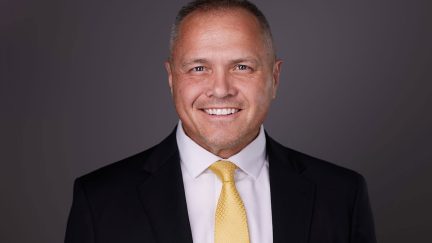Want the latest retirement plan adviser news and insights? Sign up for PLANADVISER newsletters.
WIPN Connects Women in Retirement Sector With Male Sponsors
WIPN—We Inspire. Promote. Network—an organization for women working in the retirement industry, has for years fostered mentorship and networking opportunities among its members to advance diversity, equity and inclusion in the widely male-dominated retirement plan industry. A couple of years ago, however, the group started a proprietary research program that unearthed an interesting finding.
“We found that women were over-mentored and under-sponsored,” says Rosalyn Brown, WIPN’s vice president, referring to contacts who help advance careers through promotions or even job recommendations at other firms. “We found that, when we incorporated men into our research, most of them have a sponsor, but not women. All of sudden, a light bulb went on.”
From there, Brown and her team started work on a program to match women in the retirement plan sector with male sponsors. Called Allies in Action, the program launched in March with about 14 women paired with men committed to putting them in touch with actionable contacts in the industry. The women in the program come from a range of roles and experience levels, Brown says, including sales managers, service managers and technology experts.

Rosalyn Brown
Brown notes that women often gravitate toward a mentor in the workplace to work through projects and issues within their firm—vital partners, but sometimes a bit more on the “warm and fuzzy” side of workplace connections. Meanwhile, women are less likely, according to the research, to lean on contacts known as sponsors to connect them with industry players who can help with promotions, moving across divisions or even going to another organization altogether.
“A sponsorship may not be someone you keep in contact with or someone you have known for years,” Brown says. “It is really and truly someone who has the capability to move forward your career, and we wanted to make that happen. We’ve identified the problem, and we’ve put together a solution.”
This session of Allies in Action will run through the year. From there, Brown says, WIPN will gather the results and consider how the program should evolve next year.
She notes that, through WIPN’s near-15-year history, men have often asked how they can participate or help, considering membership is, by design, only for women.
“It fixed two things that we keep hearing: men who say, ‘I want to help, I want to do more,’ and then the women who say, ‘I am looking for a sponsor,’” she says. “Even in our launch conversation with the men, I remember one of the quotes was, ‘I’m looking forward to learning some things, too,’ which I thought was amazing. Because it should be mutually beneficial, and sometimes we miss that.”
Need Remains
WIPN has been working to advance opportunities for women in the retirement plan industry going back to 2009. In research the firm released in May 2023, it found that an average of three out of 10 women in the retirement industry said their caregiving role has negatively affected their career opportunities—a minority, but still a negative sign. Only 4% of women said their caregiving role positively affected their career opportunities.
According to data from the Certified Financial Planner Board, female representation in the financial advisement sector has not improved very much despite industry pledges to improve it. In 2023, women made up just 23.7% of CFP professionals. That has not changed much over the years, with past figures at 23.6% in 2022, 23.4% in 2021 and 23.3% in 2020, according to the CFP Board website.
Through the years, Brown says WIPN has evolved from a place of connection and support to one leading change and development in the retirement industry writ large.
The new Allies in Action program, in her view, is an example of such evolution toward creating programs and activities that go beyond community and support toward actionable outcomes.
Brown says when preparing the women who joined the program, WIPN members coach them to be specific with their asks and focus areas with sponsors.
“A mentorship can be brainstorming together, but a sponsorship is a shorter relationship,” she says. “You have to be very direct and tell people what you are looking for, who you want to meet and how you want [the sponsor] to help you.”
Moving Forward
Allies in Action is designed to help women looking not just to move up in their current roles, but who might be considering moving from one side of the business to the other. Brown notes that, in retirement plan advisement in particular, women are sometimes in support roles, as opposed to being lead advisers or salespeople.
“Oftentimes it’s hard to move from one side of the business to the other,” she says. “Let’s say you’re on the service side, and you keep wanting to get over to the sales side, and [the employer] says, ‘Well, you don’t have the experience.’ But you see someone else who is able to move over to that side, and they don’t have that experience. It’s because someone on that side knew [the candidate] and recommended them.”
The program was not just of interest for people early in their careers. Brown notes one industry leader who was interested in participating, as she saw a chance to further her connections and career plans.
“When you see people at a higher point in their career, it’s often because they know how to take an opportunity and utilize it, and [they] understand the value of another sponsor,” she says.
Meanwhile, men in the program have committed to making introductions as related to the goals of their sponsored partner.
The sponsors “have to go through their Rolodex of people to find someone who is looking to develop more women or [is saying,] ‘I want someone on the sales side’ or ‘I’m looking for a consultant to do a certain type of work,’” she says. “It’s their challenge to make sure that the ladies they are working with—where they have the confidence to say, … ‘I know you’re looking to bring on another adviser. This person doesn’t have a book of business, but they have this amount of knowledge, and they would be great for your team.’”
You Might Also Like:

2025 Top Retirement Plan Adviser: Alvaro Galvis

2025 Top Retirement Plan Adviser: Erik Daley

